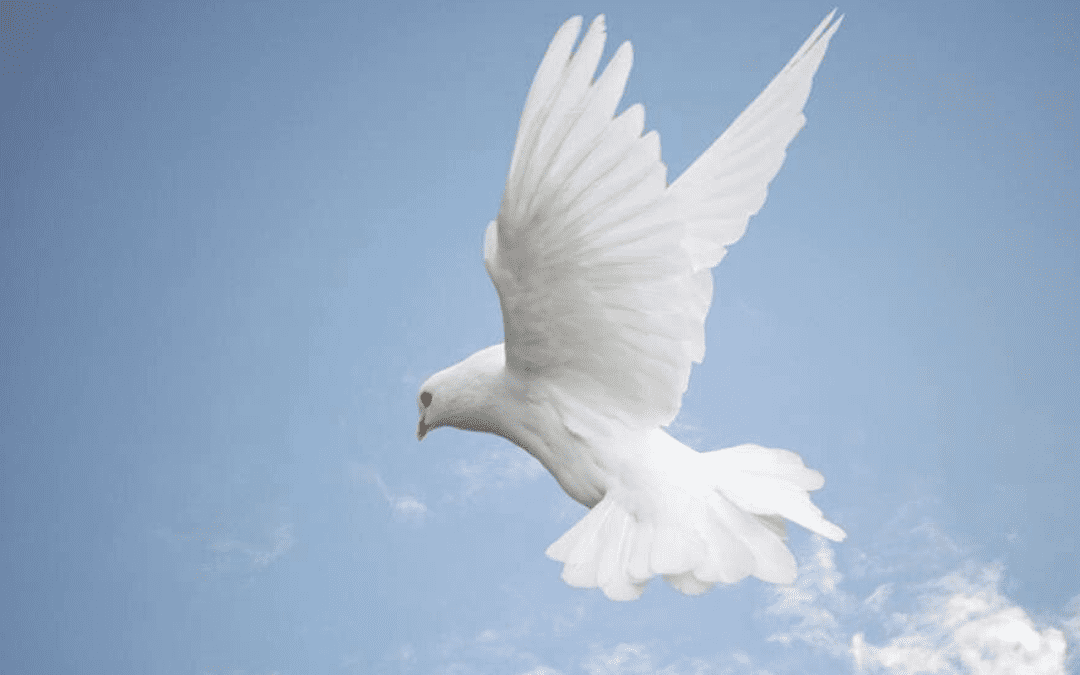
by Pigeon Patrol | Nov 29, 2020 | Bird Deterrent Products, Pigeon Patrol's Services, Pigeon Spikes, Pigeons in the News
Did you know Pigeons had a part in many religions? Keep on reading to find out more!
Pigeons In Religions
Pigeons in Judaism and Christianity
The dove features strongly in both the Old Testament and the New Testament, and references to frequent sacrifices exist in both. There are a number of references to the sacrifice of doves in the Talmud, a series of Jewish texts compiled between AD 250-500. Although the texts were compiled in AD 250-500, they are thought to relate to much earlier periods. The texts not only describe the sacrifices but also how the sacrificial birds should be reared and the correct ways of killing them. The dove is better known for its part in the Old Testament story of the Great Flood, however, when one returned to Noah with an olive branch. As a result, the dove has always been linked with peace and good news and is still released at the start of the Olympic Games today for this reason.
Pigeons and the Romans

Roman Mosaic
3rd Century AD
Pigeons in religions. The Romans had a great affinity with the pigeon and although they sacrificed the dove to the goddess Venus, and therefore revered the bird, they also bred different varieties and used the pigeon widely as a messenger. Historian and philosopher Caius Pliny, writing in the 1st century AD, says: “Many people have quite a mania for pigeons, building turrets for them on house roofs and tracing the pedigrees of single birds…”. The pigeon is commonly depicted throughout the Roman period but never in more detail than the superb Dove Mosaic discovered during the 18th century at Emperor Hadrian’s Villa. Another detailed mosaic, dating from 200 BC, shows a priest beside a shrine with an adjoining dovecote. The dovecote is detailed with pigeons on the roof and flying above it. This mosaic further confirms the connection between worship and the breeding of pigeons.
Pigeons and Islam

Prophet Mohammed
Depicted with Dove
Islam has had strong associations with the pigeon throughout history and that association continues today with large flocks being found in the holy city of Mecca, where breeding sites are provided for the birds and where pilgrims to Mecca purchase grain to feed them.

Pigeons Waiting Outside
21st Century Mosque
to be Fed
At the shrine of Mohammed in Medina (western Saudi Arabia) the thousands of pigeons that gather there are commonly referred to as the ‘Prophet’s birds’.
Pigeon racing and fancying is still a popular sport in the Muslim world and the breed of pigeon known as the ‘Arabian Laughter’ is believed to have been introduced by Mohammed and is still bred today.
Pigeons and Hinduism
The Hindu religion has also revered the dove throughout history, with the bird being mentioned as far back as 1500-1200 BC in the Rig Veda, an ancient hymn dedicated to the Aryan Deities. There are countless illustrations of the pigeon throughout Hindu history, depicted with various deities. The pigeon is still revered today, with huge flocks of pigeons being fed on a daily basis in temples throughout India, in many towns and cities in the UK and many other European cities. Source
Pigeons and Sikhism
The Sikh religion, founded in the 16th century, considers the dove to be a symbol of peace, harmony and goodwill. Sikhs believe that God’s light is in all creatures including pigeons and other birds. As with the Hindu religion, Sikhs feed pigeons around temples in India and throughout the UK and many European cities today.
The feral pigeon that is directly descended from the domesticated rock dove is now perceived as being a pest and a nuisance in towns and cities throughout the world, and yet the bird is still revered in the 21st century. Hindus, Muslims and Sikhs continue to revere the pigeon and the huge flocks of pigeons that can be seen in and around temples and places of worship confirm this. In towns and cities throughout the UK the continued growth of multi-racial groups has ensured that the feral pigeon is, to some small degree, still a symbol of peace and harmony.
About Pigeon Patrol:
Pigeon Patrol Products & Services is the leading manufacturer and distributor of bird deterrent (control) products in Canada. Pigeon Patrol products have solved pest bird problems in industrial, commercial, and residential settings since 2000, by using safe and humane bird deterrents with only bird and animal friendly solutions. At Pigeon Patrol, we manufacture and offer a variety of bird deterrents, ranging from Ultra-flex Bird Spikes with UV protection, Bird Netting, 4-S Gel and the best Ultrasonic and audible sound devices on the market today.
Contact us at 1- 877– 4– NO-BIRD, (604) 585-9279 or visit our website at www.pigeonpatrol.ca
Pigeon / Pigeon Patrol / Pigeons Roosting / Vancouver Pigeon Patrol / Bird Control / Surrey Pigeon Control / Pest / Vancouver Pigeon Blog / Birds Inside Home / Pigeons in the cities / Ice Pigeons/ Pigeons In Religions
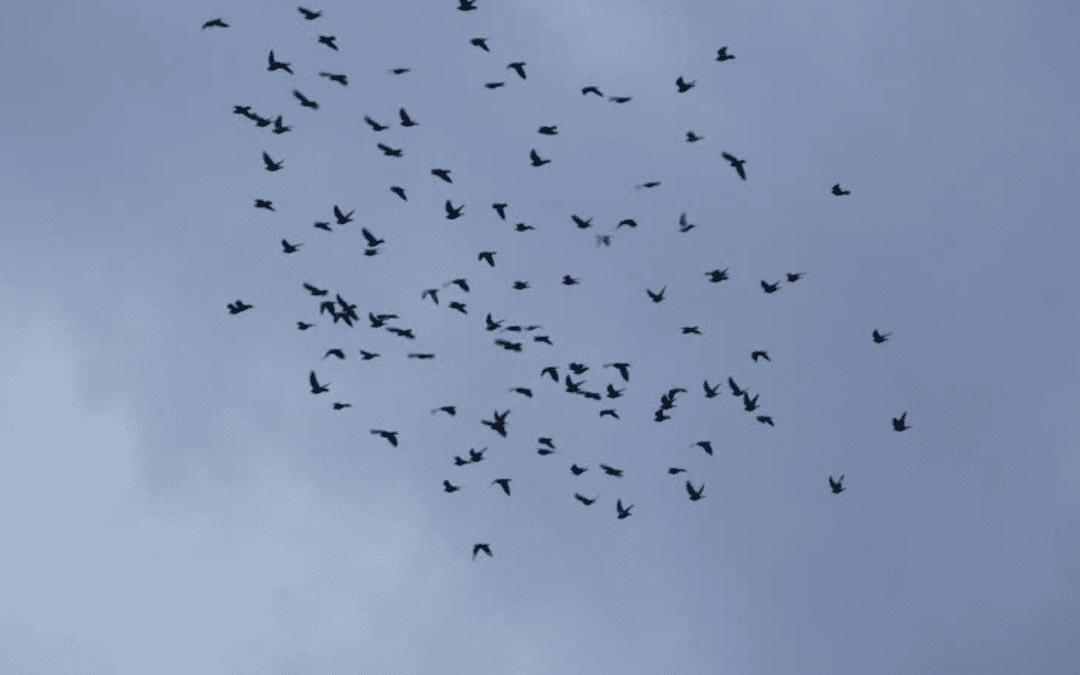
by Pigeon Patrol | Nov 28, 2020 | Bird Netting, Pigeon Patrol's Services, Pigeon Spikes, Pigeons in the News
Ever wondered why pigeons fly in circles? Keep on reading to find out why!
Why Pigeons Fly In Circles
Pigeons fly in circles to better navigate. These birds have a great sense of smell which they use to navigate. They fly in circles to locate the smell that reminds them of home. They could also be flying in a thermal, these help them look for food and conserve energy when flying.
Pigeons can be weird sometimes. The fact that these birds live close to humans, gives us the privilege to study and learn about their many animal behaviours.
You may have seen a flock of pigeons fly in circles and wonder what’s going on. Well, you are not alone. A lot of humans with an interest in birds have also been baffled by this.
Source
The good news is, thanks to countless scientific research and studies, the reason for this bird phenomenon has been cracked.
This article carefully explains why pigeons and a few other birds fly in circles. We hope it answers your questions.
Pigeons fly in circles to find their way around. These birds are gifted with a strong and acute sense of smell. We humans use our eyes to find our way home, pigeons use their sense of smell to locate their destination.
Flying in circles allows pigeons to sense the earth’s magnetic field and smell the many odours in the air. They do this until they find the smell native to their home.
Another possible reason why pigeons fly in circles is to discourage raptors from preying on them. Pigeons live in the same environment as crows and peregrine hawks, and they sometimes fall prey to these birds.
When a flock of pigeon senses danger from one of these birds, they are likely to leave their area of rest and fly in circles till the threat passes.
Without their sense of smell, these birds would literally be lost. But pigeons aren’t the only birds that fly in circles, many birds fly in circles for various reasons.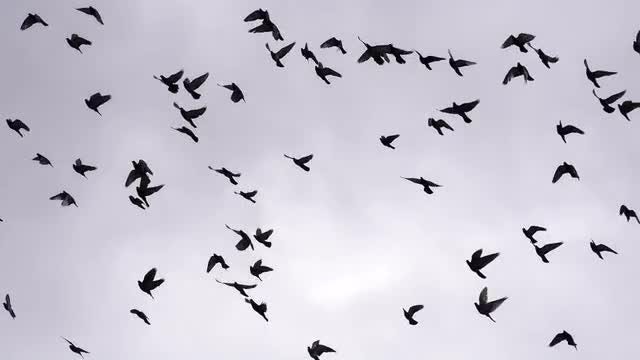
About Pigeon Patrol:
Pigeon Patrol Products & Services is the leading manufacturer and distributor of bird deterrent (control) products in Canada. Pigeon Patrol products have solved pest bird problems in industrial, commercial, and residential settings since 2000, by using safe and humane bird deterrents with only bird and animal friendly solutions. At Pigeon Patrol, we manufacture and offer a variety of bird deterrents, ranging from Ultra-flex Bird Spikes with UV protection, Bird Netting, 4-S Gel and the best Ultrasonic and audible sound devices on the market today.
Contact us at 1- 877– 4– NO-BIRD, (604) 585-9279 or visit our website at www.pigeonpatrol.ca
Pigeon / Pigeon Patrol / Pigeons Roosting / Vancouver Pigeon Patrol / Bird Control / Surrey Pigeon Control / Pest / Vancouver Pigeon Blog / Birds Inside Home / Pigeons in the cities / Ice Pigeons
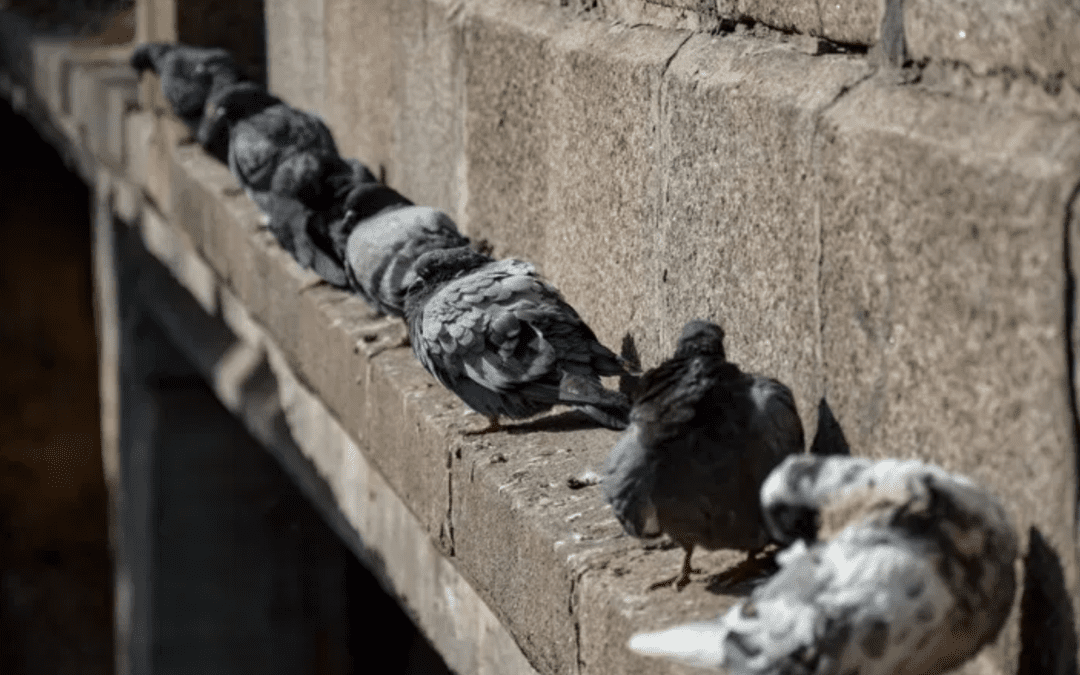
by Pigeon Patrol | Nov 23, 2020 | Bird Deterrent Products, Bird Netting, Pigeon Control, Pigeon Droppings, Pigeon Patrol's Services, Pigeon Spikes
Do you have pigeons roosting at your property? Not sure if they cause any harm or if you should get rid of them? Keep on reading to find out what pigeons may do to your property!
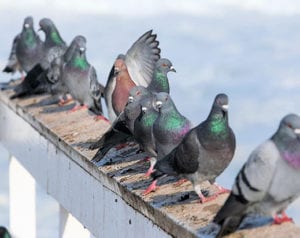
Pigeons may seem harmless, but these pest birds cause millions of dollars in damage every year to buildings, ventilation systems, machinery, statues, roofs, and much more. Bird droppings and nesting materials left by pigeons pose physical problems and health hazards that can become very serious if not corrected quickly making prompt and effective professional bird control is often essential.
Pigeons Roosting
Pigeons find our window ledges, rooftops, bridges, and warehouses to be ideal substitutes for the natural ledges in cliff sides that they have always used as roosting, nesting, and sheltering sites. When flocks grow too large and become a nuisance, killing the birds is often the first plan of action.
Potential Health Hazards:
There are many health risks associated with pigeons and their droppings. The bacteria, fungi, and ectoparasites that they and their droppings harbor are numerous. The four most common ways disease is passed by bird to human are: inhalation of fecal dust, food and water contaminated with bird feces, direct contact with feces, and parasitic transfer.
Pigeon droppings can expose humans to many diseases, including salmonella, Newcastle disease, candidiasis, encephalitis, orthosis, and toxoplasmosis. In addition, they can also carry cryptococcosis, and coccidiodomycosis, which cause meningitis. The droppings may also harbor growth of fungus, which causes histoplasmosis. Fleas, lice, mites, and other pests often live on these birds, hitching a ride to where ever they want to jump off. Pigeons may also attract other pests, such as rats, which feed on dead pigeons and food that well-intentioned bird lovers may scatter for them.
In addition to disease, bird droppings are known for triggering 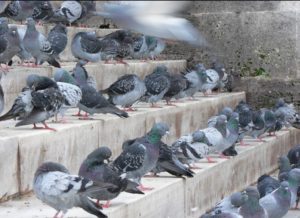 people to slip and fall, which makes it especially important to rid the birds from highly trafficked areas. Source
people to slip and fall, which makes it especially important to rid the birds from highly trafficked areas. Source
Damage Caused by Pigeons:
These are messy birds, leaving droppings everywhere they go, particularly near their roost sites. Pigeon droppings are not just gross, they are also full of uric acid which makes them extremely corrosive. The droppings are the direct cause of millions of dollars in damage to buildings and other structures. Particularly vulnerable are painted surfaces, awnings, signs, and other similar surfaces. A tragic example of the corrosiveness of pigeon droppings is the Minnesota bridge accident in 2007, which was found to be the direct result of bird droppings eating away at the metal bridge supports until they weakened.
In addition to the damage cause by their acidic droppings, pigeon nests can also cause damage. Pest birds will often build nests in gutters or on roof corners blocking essential drainage systems. Every year several warehouses experience roof damage, and even collapse, when drainage systems have been blocked and standing water rises just six inches. Bird nests can also block ventilation systems, which not only prevents exhaust of potentially harmful gases, but also has the potential to spread diseases. Fire is also a potential hazard. Nesting materials are usually flammable, consisting of twigs, straw, grasses and dried droppings. When pest birds build their nests inside electric signs or other machinery there is a great risk of fire.
Pigeons are creatures of habit and highly social. Once they have found a cozy spot the will return again and again, bringing along more of their pigeon pals. Prolific breeders, pigeons can hatch several broods a year, sometimes even laying a new clutch before the previous have even hatched. Often our buildings and structures have architectural features such as drain spouts and eaves that make perfect nesting spots for these birds. Pigeons are comfortable around humans and they’re hard to scare away or deter. Once a flock of stubborn unwanted pigeons have set up shop in/on your building, it can be stubbornly resistant to removal, often requiring the services of a pest control or animal control professional. As is true of many pests that invade our homes and businesses, the first step to controlling feral pigeons is to remove their food source.
Tips to deter pigeons:
- Don’t feed the pigeons.
- Screen drains and gutters to make your property less attractive to pigeons.
- Encourage children to pick up spilled food – and teach them NOT to feed pigeons
- Keep areas around trash bins and outdoor dining areas clean
- Eliminate water sources such as bird baths, over-watered lawns, or kiddy pools.
If you need help to prevent or eliminate pesky problem pigeons, please contact us!
Hope you learned more about why you should take action when pigeons are roosting on your property
About Pigeon Patrol:
Pigeon Patrol Products & Services is the leading manufacturer and distributor of bird deterrent (control) products in Canada. Pigeon Patrol products have solved pest bird problems in industrial, commercial, and residential settings since 2000, by using safe and humane bird deterrents with only bird and animal friendly solutions. At Pigeon Patrol, we manufacture and offer a variety of bird deterrents, ranging from Ultra-flex Bird Spikes with UV protection, Bird Netting, 4-S Gel and the best Ultrasonic and audible sound devices on the market today.
Contact us at 1- 877– 4– NO-BIRD, (604) 585-9279 or visit our website at www.pigeonpatrol.ca
Pigeon / Pigeon Patrol / Pigeons Roosting / Vancouver Pigeon Patrol / Bird Control / Surrey Pigeon Control / Pest / Vancouver Pigeon Blog /
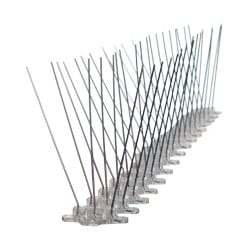
by Pigeon Patrol | Nov 2, 2020 | Animal Deterrent Products, Bird Deterrent Products, Bird Spike, Pigeon Patrol's Services, Pigeon Spikes
Why You Should Use Bird Spikes
You have a bird problem and want to get rid of them. Pigeon Patrol has got you covered with our Bird Spikes. Why? Keep on reading to find out why you should use bird spikes.
What
A bird control spike, is an object consisting of long, needle-like rods used for bird control. They come in a variety of styles and sizes but they work in the same way. Bird control spikes can be attached to building ledges, street lighting, roofs, commercial signage & anywhere else birds can possibly land on to prevent wild or feral birds from perching or roosting.
Why
These spikes make it difficult if not impossible for the bird to land or walk in the area with spikes. They will bring to harm to the bird but will make them uncomfortable that they will have to leave the area. These spikes have glue tracks and screw holes, the spikes can safely be attached to almost any surface. Source
Pigeon Patrol
At Pigeon Patrol, we offer stainless steel bird spikes. Steel spikes offer unique benefits. Not only are they less visible and blend in with a building’s architecture better than plastic spikes, steel spikes also come with a longer guarantee and are able to withstand direct sunlight and higher temperatures Ultra-flex Bird Spikes, prevents birds from landing or roosting on rooftops, ledges, and other surfaces. It comes in either a 5 inch or 8 inch spread and is virtually invisible when installed. The spikes come in 2-foot lengths and measures 4½ inches in height.
- Base made with UV protected recyclable polycarbonate.
- Spikes made with stainless steel,
4½ inches in height.
- Ultra flexible for pipes, beams, signs and light poles.”
- Install with screws, caulking or cable ties
- Spikes come in 2 ft sections with a 10-year warranty
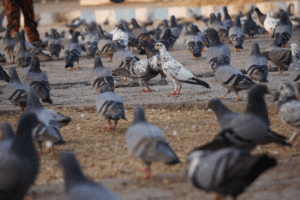
Contact Us For Any Questions!
(604) 585-9279
About Pigeon Patrol:
Pigeon Patrol Products & Services is the leading manufacturer and distributor of bird deterrent (control) products in Canada. Pigeon Patrol products have solved pest bird problems in industrial, commercial, and residential settings since 2000, by using safe and humane bird deterrents with only bird and animal friendly solutions. At Pigeon Patrol, we manufacture and offer a variety of bird deterrents, ranging from Ultra-flex Bird Spikes with UV protection, Bird Netting, 4-S Gel and the best Ultrasonic and audible sound devices on the market today.
Contact us at 1- 877– 4– NO-BIRD, (604) 585-9279 or visit our website at www.pigeonpatrol.ca
Bird Gone, Pigeon Gone, Seagull Gone, Pigeon problems, 1-877-4NO-BIRD, 4-S Gel, Bird Control, Pigeon Control, bird repellent,, sonic bird repellent, stainless steel , bird spikes Vancouver, Ultra Sonic Bird Control, Bird Netting, Canada bird deterrents, Pigeon Pests, B Gone Pigeon, Pigeon Patrol, pest controller, pest control operator, pest control technician, Pigeon Control Products, humane pigeon, pigeon deterrents, pigeon traps, Pigeon repellents, Sound & Laser Deterrents, wildlife control, raccoon, skunk, squirrel deterrent, De-Fence Spikes, Dragons Den, Canada bird spikes, Canada pigeon, pigeon control, pigeon patrol, pigeon. Kill pigeons, crow, starling, Pigeon Habitat, Pigeon identifications,
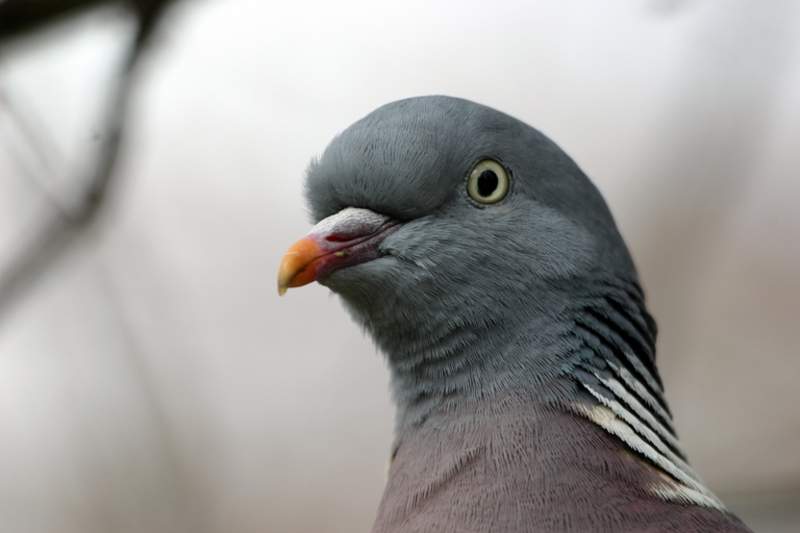
by Pigeon Patrol | Oct 26, 2020 | Bird Deterrent Products, Bird Netting, Bird Spikes, Pigeon Control, Pigeon Patrol's Services
Pigeon Family Life
Pigeons and their family live in groups called “flocks.” Each flock has an equal number of male and female members. A courting male pursues his intended mate on the ground, circling her, with his neck feathers inflated and his tail spread, bowing and cooing all the while. Pigeons mate for life, but if one partner dies the survivor generally will attempt to find another mate.
Pigeons show a strong affinity for human-built structures. Nests, a haphazard combination of twigs, leaves, and a few feathers, are built on window ledges, behind signs, and under bridges. Parents take turns incubating the clutch of one or two white, unmarked eggs for between 16 and 19 days. After the eggs hatch, both parents feed the baby pigeons, or squabs, a crop secretion called “pigeon milk,” which is produced from the lining of the crop, a sac-like food storage chamber located under the bird’s esophagus. The milk is a highly nutritious and an efficient way of feeding young. Squabs fledge at four to six weeks of age but remain dependent on their parents for as long as the adults will tolerate them — generally another one or two weeks. Individuals may be capable of breeding at six months of age.
Pigeons leave their nesting and roosting sites during daylight hours to search for food, but they return at night, as well as periodically during the day when raising young.
source
About Pigeon Patrol:
Pigeon Patrol Products & Services is the leading manufacturer and distributor of bird deterrent (control) products in Canada. Pigeon Patrol products have solved pest bird problems in industrial, commercial, and residential settings since 2000, by using safe and humane bird deterrents with only bird and animal friendly solutions. At Pigeon Patrol, we manufacture and offer a variety of bird deterrents, ranging from Ultra-flex Bird Spikes with UV protection, Bird Netting, 4-S Gel and the best Ultrasonic and audible sound devices on the market today.
Contact us at 1- 877– 4– NO-BIRD, (604) 585-9279 or visit our website at www.pigeonpatrol.ca
Bird Gone, Pigeon Gone, Seagull Gone, Pigeon problems, pigeon spikes, 1-877-4NO-BIRD, 4-S Gel, Bird Control, Pigeon Control, bird repellent, Bird Spikes, bird law sonic bird repellent, stainless steel bird spikes, bird spikes Vancouver, Ultra Sonic Bird Control, Bird Netting, Plastic Bird Spikes, Canada bird spike deterrents, Pigeon Pests, B Gone Pigeon, Pigeon Patrol, pigeon family pest controller, pest control operator, Bird law pest control technician, Pigeon Control Products, humane pigeon spikes, pigeon deterrents, type of birds, pigeon traps, Pigeon repellents, Sound & Laser Deterrents, wildlife control, raccoon, skunk, squirrel deterrent, De-Fence Spikes, Dragons Den, Canada bird spikes, Pigeon behavior ,Canada pigeon, pigeon control, pigeon patrol, pigeon. Kill pigeons, crow, starling, Pigeon Habitat,
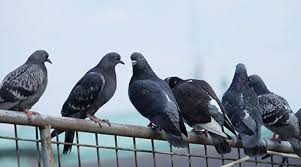
 people to slip and fall, which makes it especially important to rid the birds from highly trafficked areas. Source
people to slip and fall, which makes it especially important to rid the birds from highly trafficked areas. Source

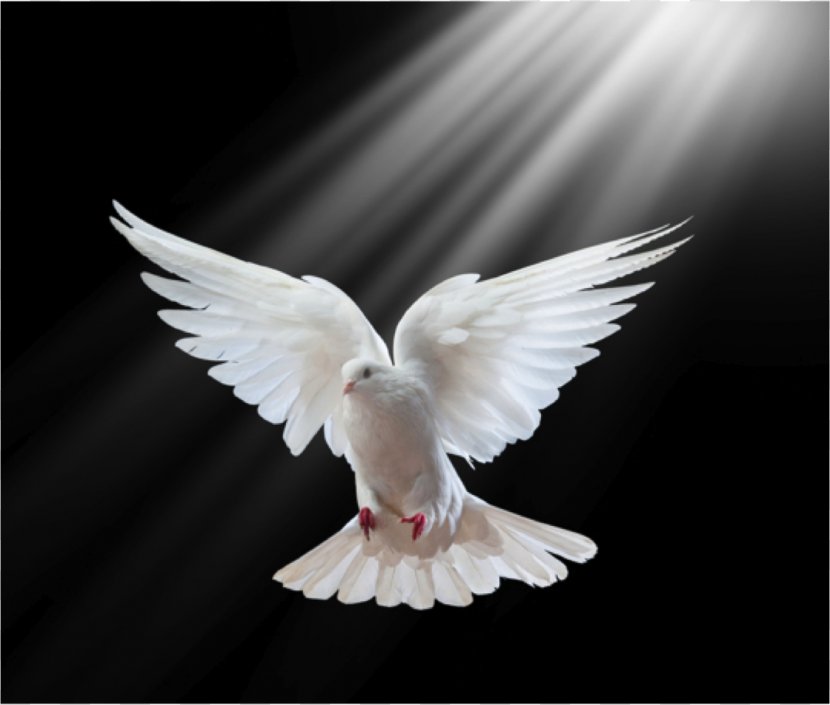
 Roman Mosaic
Roman Mosaic Prophet Mohammed
Prophet Mohammed Pigeons Waiting Outside
Pigeons Waiting Outside







